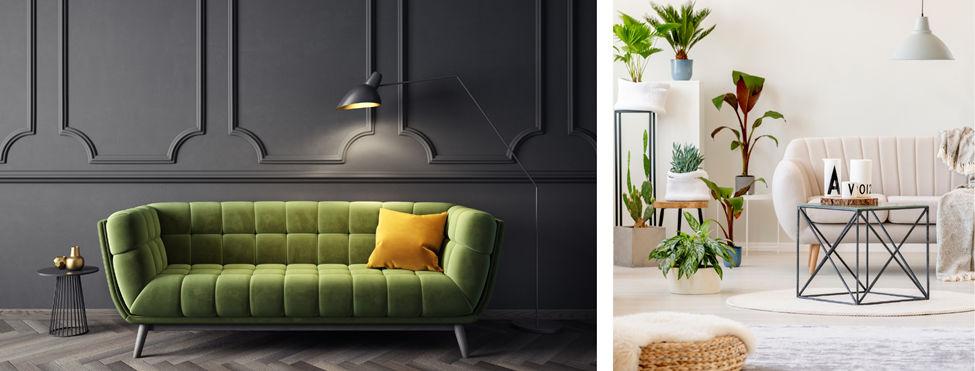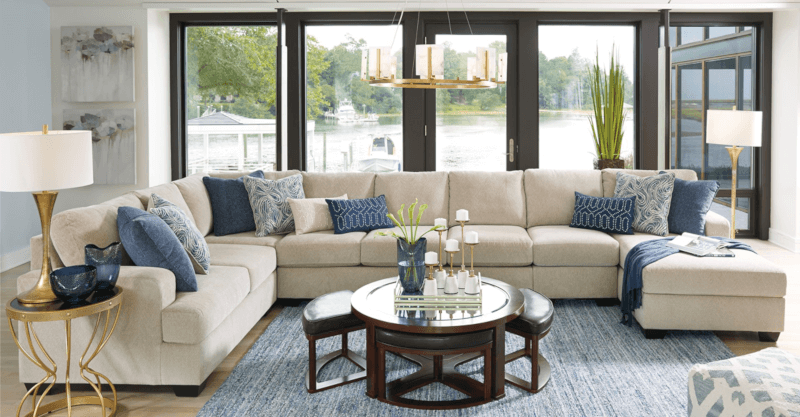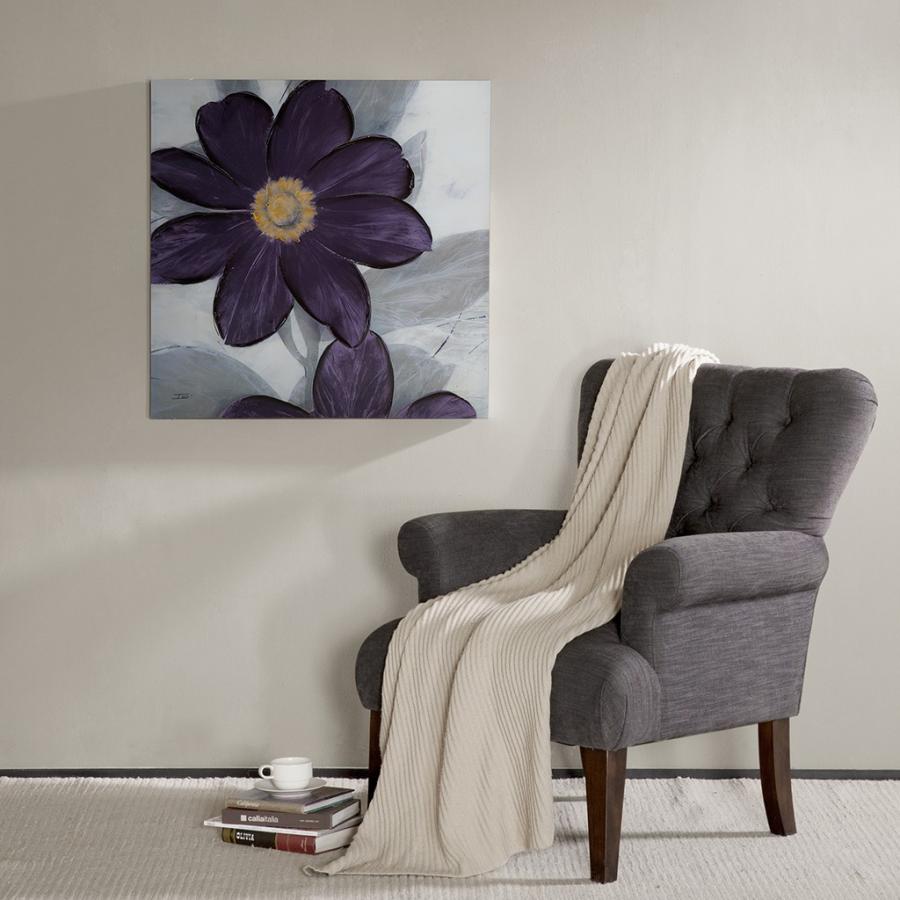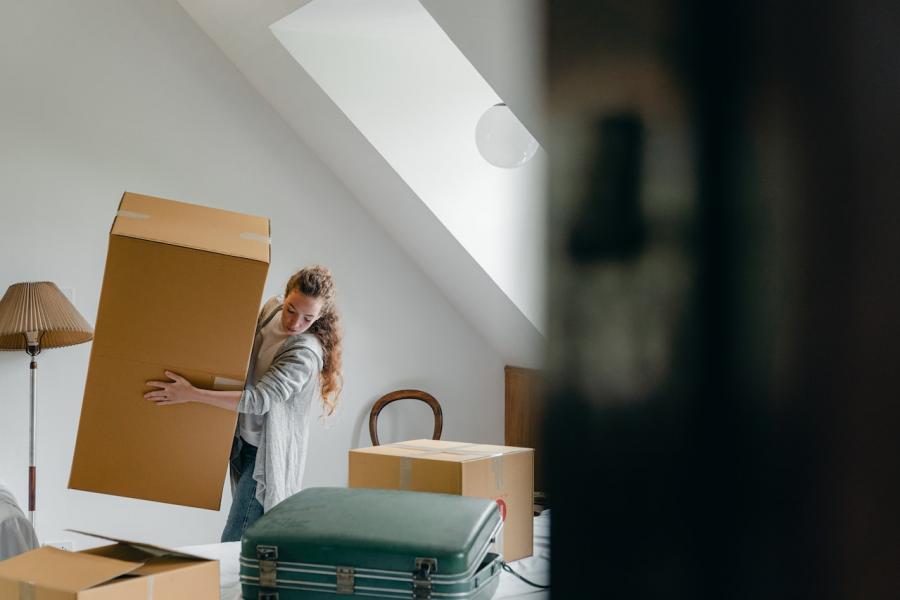
2020 was a year like no other - for people, businesses and spaces alike. Public spaces - malls, restaurants and offices - were largely abandoned, while our homes suddenly became our places of work, school, play and sleep. As such, the expectations we have for and needs we have of our homes have transformed. The ways in which we use our kitchens, living rooms, dens - and even bedrooms - have all morphed, as have the ways in which we decorate and design our spaces. For instance, while open floor plans were once a contemporary design given, they are now no longer practical. With more of us working and studying remotely, private spaces in which to work - separated from spaces in which to relax and unwind - are now necessary for maintaining our collective and individual sanity. What we want from our homes - not just what we need - has also changed. Throughout the home decor trends for 2021, homeowners are expected to step away from visually unobtrusive, minimalist interiors and move towards spaces filled with character and color, personality and panache. Learn more about the home decor trends going out of style in 2021 - and the interior design trends expected to reemerge in 2021 below.
5 Home Decor Trends Going Out of Style in 2021
Homeowners, designers and decorators alike can expect stark, all-white interiors with smooth finishes to fall by the wayside in 2021. Interestingly, interiors experts predict some traditional decor elements like nautical, coastal and farmhouse-inspired pieces to disappear this year. However, they anticipate other traditional styles - particularly those inspired by previous periods in design history - to make a huge comeback. All in all, comforting and expressive spaces will replace neutral, clinical spaces in 2021. Follow below for more about which home decor trends are going out of style this year.
1 Shiplap and All-White Farmhouse Decor
The predictable formula of all-white shabby chic decor just does not ring true in the new year. Neither do distressed shiplap wall decor or white-washed floorboards excite homeowners, decorators or designers. Shiplap is falling out of favor particularly quickly, writes Sophia Mitrokostas in her article “7 interior-design trends that will start to disappear this year, and 8 you'll see everywhere” for Insider. Quoting interior designer Rachel Street, Mitrokostas writes that the “trendy way to decorate interior walls in the 2010s...is one of the fastest fading trends.” Street encourages decorators to find “other emerging ways of bringing texture into a space” without resorting to tired shiplap.
Taylor Davies explains the departure in the article “Tired Trends in Home Decor” for The Spruce. Davies writes that “shabby chic, the early '90s decor trend known for whitewashed furniture and faded floral prints has definitely seen its day (at least for now).” This sickly sweet, “ultra-feminine style of decorating has been pushed aside for a more modern vibe, more crisp lines, and a masculine influence.” Even in feminine granny-chic interiors like those beloved by grandmillennials, small scale floral prints and off-white accents are nowhere to be found! Other farmhouse decor elements are also slipping away, including - but not limited to - burlap, mason jars, kitchen chalkboards and cutesy country store signs.
2 Neutral Monochrome
Last year, quiet neutral monochrome reigned supreme, with delicate off-white, greige and sand coming out on top. However, this year, the neutral monochrome interiors of Scandi, Kon Mari and minimalist design are giving way to bold, vibrant shades. Interestingly, Michelle Ogundehin predicted the changing tide in her article “Sexy Eco, monochrome and plus-size furniture: interior design trends for 2020” almost exactly one year ago for Dezeen. In her article, Ogundehin predicted a shift towards deep, saturated shades from nature, anticipating growing interest in “dark inky midnight blues... Japanese-inspired indigo blues,” ochres and greens.
Towards the end of 2020, this mass movement away from neutral monochrome towards organic shades did occur. However, in 2021, interiors experts expect even more vibrant colors - particularly jewel tones - to arise. In her article “7 interior-design trends that will start to disappear this year, and 8 you'll see everywhere” for Insider, Sophia Mitrokostas agrees. Quoting Dennese Guadeloupe Rojas of Interiors by Design, Mitrokostas notes that “‘gray...interiors can look cold and lack distinction’” and elaborates that she “‘foresees bolder colors gaining popularity’” instead. Rachel Street echoes the sentiment expressed by both Rojas and Ogundehin, noting that “‘people will return to creating visual interest through color’” in 2021.
3 Smoothe Backsplashes
While smooth backsplashes are easy to clean, they rarely add lots of visual interest unless they feature an exquisite vein of marble or stunning slab of granite. Monochromatic and neutral kitchens have served homeowners for several decades, but traditional stacked subway tile and glossy ceramic squares have lost their proverbial shine in recent months. Rather, handmade ceramic tiles and unfinished, raw-edged natural tiles are coming back into vogue.
As Jessica Bennett writes in her article “48 Beautiful Kitchen Backsplash Ideas for Every Style” for Better Homes & Gardens, “there are so many ways to customize your kitchen walls” so there is no need to pigeonhole oneself. Consider branching out and replacing subway tiles with “glossy teal tiles,” “decorative stone tiles” with unusual shapes, “recycled glass” or “modern mosaics,” all of which Bennett endorse.
4 Clinical Spaces
While spotless, gleaming countertops, sharp angles and glossy fixtures once established a sophisticated and fresh atmosphere, they now feel a bit more clinical than one would like. After a year of repeatedly wiping down all surfaces and removing textiles that might gather dust or germs, decorators in 2021 would prefer a bit more personality in their spaces. In her article “The Top Interior-Design Trends for 2021” for The Wall Street Journal, Kathryn O’Shea-Evans reiterates this notion. She writes that stark kitchens, inexpressive living rooms and “lab-like bathrooms” are decidedly out in 2021.
Quoting Virginia designer Sara Hillery, O’Shea-Evans writes that “‘design trends are headed toward a softer, more natural look,’” meaning that “austere” spaces no longer have a place. This is not to say, however, that interiors should be cluttered moving forward. Rather, existing design elements should be updated with fun patterns, intriguing textures and exciting color combinations.
5 Open Floor Plans
Open-concept living is no longer as popular as it once was - and architects and homeowners alike can blame the COVID-19 pandemic for the change in public sentiment. They can also look towards a growing number of homes occupied by multigenerational families. The former pushed millions of American workers and students, couples and families into shared indoor spaces for extended periods of time. During these periods, residents of these shared homes were forced to allocate space in largely open-concept spaces, making delineating private work spaces almost impossible. Steele Marcoux explains this further in the article “Will The Pandemic Be The Death Of The Open Floor Plan?” for Veranda. Marcoux writes that “the open floor plan presents some serious design drawbacks...such as a lack of privacy, poor sound control, and a cluttered appearance (despite regular tidying).” Unfortunately, such “imperfect aspects of our domestic lives...have been exposed and exacerbated during the quarantine like never before.”
The latter cause of dwindling interest in open floor plans has been trending upwards over the last decade, notes a 2018 Pew Research Poll. This poll found that in 2018, “a record 64 million Americans live in multigenerational households,” a number expected to rise significantly as we move into 2021. The fact that Americans are spending more time indoors and more time-sharing spaces with family has led to the decline in popularity of the open-concept living space. Instead, homeowners are searching for ways to offer privacy and a sense of ownership to each resident instead of constantly stepping on each other’s toes or being hopelessly distracted.
Home Decor Trends for 2021
As explained above, interior designers, architects, home decorators and homeowners have all shifted their understanding of what “home” means in light of the 2020 COVID-19 pandemic. The ways in which the pandemic toppled the expectations we have for our homes and our perceptions of what being at home should make us feel have altered significantly. Today - in 2021 - our homes are where we entertain, where we work, where our children learn, where we sleep and where we relax. Sometimes, they are even where we have telehealth appointments and quarterly meetings. Home interiors in 2021 will be cozier, more personal, more colorful, more creative and more responsive to our changing needs than they have been in the past.
Industrial Interiors
Mixing wood and metal elements in interiors has become more popular in recent years, signaling growing interest in industrial interiors. The dark neutrals and materials associated with industrial interiors are also on-trend in 2021 - particularly charcoal gray, dark stained woods, brushed nickel and blackened steel.
Mixing and Matching Patterns
William Morris-esque floral wallpapers, plaid upholstery and retro prints have all garnered the interest of fashion-forward interiors lovers in 2021. Emerging from other trends like the Grandmillennial interiors trend and the resurgence of Art Nouveau and Art Deco styles, clashing prints and patterns offer a sense of whimsy and joy.
Vibrant Colors
Like mixing patterns and prints throughout your interior, adding vibrant colors contributes joy and excitement. When done well, filling one’s home with deep, saturated shades of green, blue, purple and more can create an engaging space with a warm and enjoyable atmosphere. In her article “Top Interior Designers Predict The Biggest Color Trends for 2021” for Veranda, Lauren Wicks writes of the many colorful shades designers are loving in the new year. Wicks expects to see “jewel tones,” “sunny hues,” “notes from nature” and “shades of optimism.”
Geometric Shapes
Last year was all about organic shapes, as seen in the proliferation of u-shaped sectionals and bubble chairs. This year, geometric shapes and sharp lines will find their way into homes across the country. Monique Valeris explains why in her article “15+ Inspiring Home Decor Trends You'll Be Tempted to Try in 2021” for Good Housekeeping. Valeris writes that homeowners and interior designers should expect to see more geometric accents in home decor throughout 2021 because they add structure, visual interest and a line of sight. They also pull inspiration from prior periods in interior design history - particularly from the mid to late 20th century. Quoting Anna Brockway from Chairish, Valeris writes that “‘one thing is for sure: postmodern and 1980s Memphis-inspired pieces are here to stay!” Brockway and other homeware and furniture merchants are “‘wild for hard edge geometry that adds dramatic tension to a space.’”
Pastels as Neutrals
While greige, beige and all manner of muted neutrals are out of fashion this year, pastels functioning as neutrals are very much in style. Soft pastels like mint green, shell pink, dove gray, baby blue and pale yellow can be added to spaces as neutral accents. They can also function as the perfect mock-neutral monochrome when applied to each wall of a room. Favorites of interior designers include sage green and millennial pink, the latter of which Nashville designer Lori Paranjape endorses.
Open Shelving
Unfortunately, this next trend is not for everyone - particularly those living in states prone to earthquakes like California and Washington. As lovely as open shelving and glass curio cabinets are, they might not be practical for families with small children or rowdy pets - unless mounted quite high on the wall. However impractical open shelving might be for some, the design concept packs a major visual punch, placing art, special dishes and collectibles on display. Interestingly, open shelving appears to have replaced a popular decor trend from 2019 and 2020: the gallery wall.
Traditional Furniture Silhouettes
Traditional home decor elements are all the rage in 2021, despite the fact that Mid Century Modern and Contemporary designs have filled the pages of glossy interiors magazines for the last decade. Catching the Grandmillennial, Victoriana, antique and vintage trends, traditional furniture silhouettes have reemerged this year. Traditional furniture - with its carved wood legs, high backed chairs, tufted upholstery and brocade cushions - screams comfort, coziness and a growing desire to look towards the past for inspiration.
Color Blocking
Color blocking corresponds directly to the vibrant colors trend outlined in number three of this list. This trend is easy and affordable to achieve, working well in both large spaces and small interiors. Designers and decorators expect color blocking to be popular throughout 2021 in bedrooms, kitchens and great rooms. Hebe Hatton recommends considering blocking in two or more colors per room in her article “Kitchen design trends 2021 – 15 looks to bring your kitchen up to date” for Real Homes. Hatton writes that dual-toned spaces - particularly two-toned kitchens - “have been all over Instagram lately.” Choosing bold tones like fuchsia, aqua and/or mustard creates a “fresh, colorful look.”
Room Dividers
Lastly, we explore the growing popularity of room dividers. From Bohemian teak and wicker to Japanese lacquered wood, room dividers have flown off the shelves in recent months because they offer solutions to unwanted open floor plans. As discussed above, open concept living spaces have declined in popularity over the last year because of the lack of privacy, quiet spaces and storage they provide. Room dividers allow for better separation in the home - both between different segments of a space and between residents of the house.
Kate Holdefehr elaborates in her article “These Will Be the Top Home Decor Trends of 2021, According to the Experts” for Real Simple. She writes that because “homes now serve multiple functions—home office, gym, creative space—the need for privacy and separate zones has increased.”


































